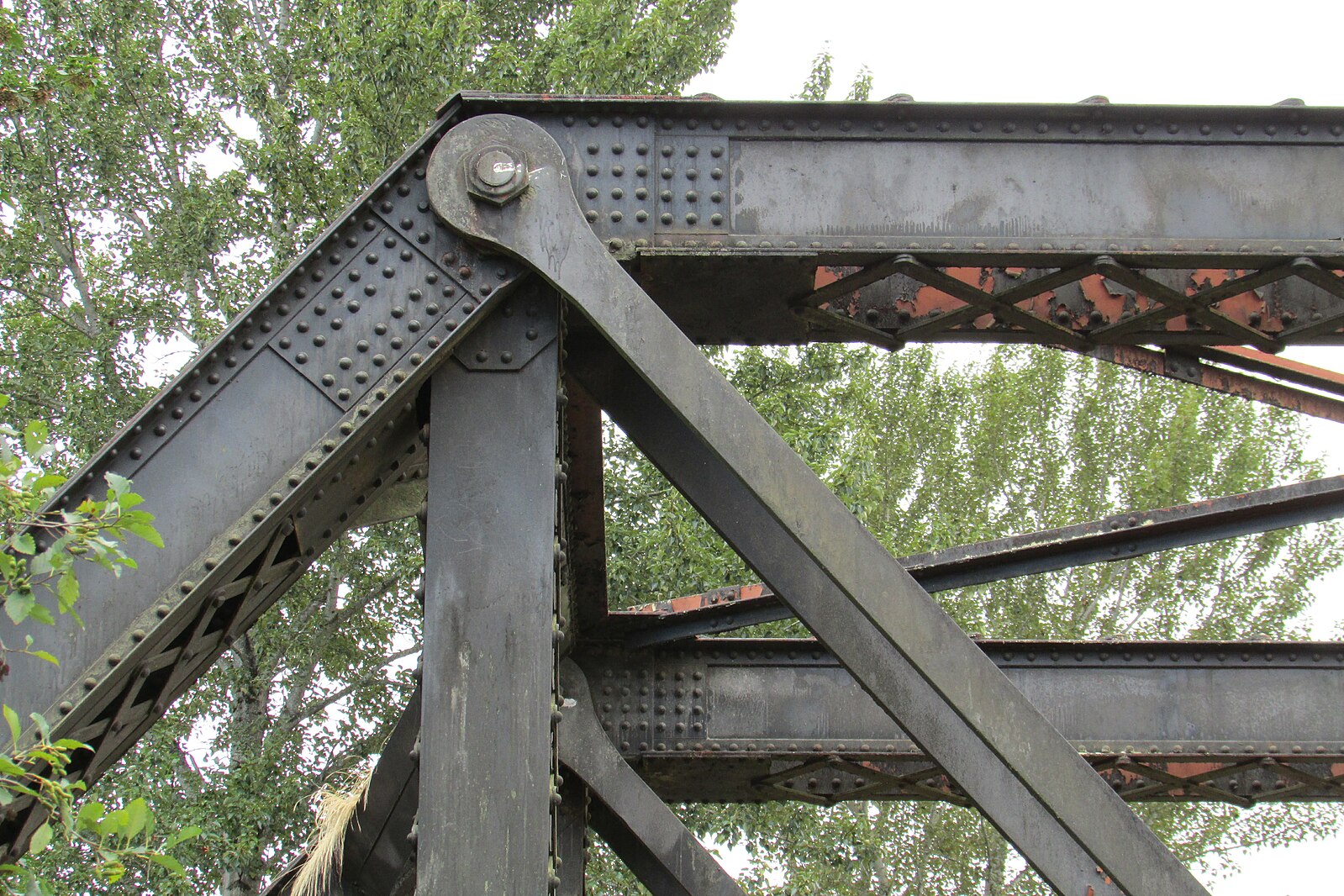Bolt basics

A bolted joint holding together the Foothills Trail bridge over the Puyallup River in Washington. (Photo: Chris Light via Wikimedia Commons.)
Engineering Ph.D. student Justin Porter is changing the nuts and bolts of mechanical engineering, literally — simulating the friction of vibrations that lead to bolt wear, tear and failure.
The Rice University Department of Energy Computational Science Graduate Fellowship (DOE CSGF) recipient works with advisor Matthew Brake on friction’s effects on the bolted connections that hold together many machines we rely on — engines, aerospace vehicles, automobiles, bridges, bikes. These common points of mechanical failure are not well understood. “Engineers must significantly over-design jointed connections to ensure the reliability of the assembly,” Porter says. As a result, vehicles and machines are heavier and more expensive than they need to be and require more energy to move.
Porter points out that industry and government spend about $2 billion annually on the vibration testing needed to avert mechanical failure. The process is to design, prototype, test, redesign, re-prototype, retest and so on.
“My goal is really to do very controlled experiments and understand what’s going on so we can predict failure instead of testing every full-scale prototype,” Porter says. His first set of simulations modeled a simple connection between two lengths of steel with a contact area about an inch wide and a few inches long held together by three bolts — an established benchmark in the field. “It’s just a two-foot-long piece of steel that’s been cut and bolted back together, but it helps us understand connections in real structures like an airplane wing.”
In his first simulation, he challenged the widespread practice of modeling friction between two bolted surfaces as a stick-slip phenomenon — “where two things are completely stuck and maybe there’s a linear spring in there and then they start slipping,” he says. He had read a review paper about the various ways researchers fit their friction models to experimental data and identified 26 modeling approaches that seemed promising to investigate. Then he tried to fit each approach to experimental data and saw that some fit better than others.
“The real takeaway from that study was that it’s convenient to model friction as stick-slip,” he says. “But using a much smoother transition does a much better job of capturing the experimental data.” His resulting smooth-transition model is now being applied to ongoing projects.
In his second simulation, he incorporated rough-contact theory. “Instead of just looking at two perfectly flat bolted surfaces pressing against each other, if you zoom in far enough, the surfaces are hilly or mountainous — more like rolling hills,” he says. He used a white light interferometer in Brake’s lab to acquire surface data, revealing features ranging in height from a few microns to a few hundred microns.
He combined novel analytics with “physics down at that scale and integrated up,” he says. The result was an even closer match to experimental data. However, he points out that this physics-based friction modeling approach is still not perfect since he has demonstrated it for only one structure. “What I’m working on now is applying the same modeling approach to a second joint structure to further validate that it works.”
In a new set of simulations, he’s been developing a new model of the complex phenomena in airplane wings, which are subject to harmonic events. When the normal vibrations of an operating device are amplified as much as three-fold, they accelerate wear and tear on bolted connections and the parts they hold together.
Porter completed practicums at Lawrence Livermore National Laboratory and the National Renewable Energy Laboratory (NREL). At Livermore, he worked on improving time-integration schemes in simulations of vibrating structures to avoid errors that can artificially add to or dampen energy. At NREL, he simplified a wind-turbine blade model to allow less computationally expensive studies of wind-induced vibrations that can damage the blades while they are stopped for maintenance.
“Both practicums were extremely valuable for broadening my perspective and informing my career plans,” he says. At NREL, Porter applied his expertise to a bolt-free problem “while learning many skills that I took back to my Ph.D. research.”
About the Author
Andy Boyles is a senior science writer at the Krell Institute and contributing science editor at Highlights for Children Inc.





You must be logged in to post a comment.